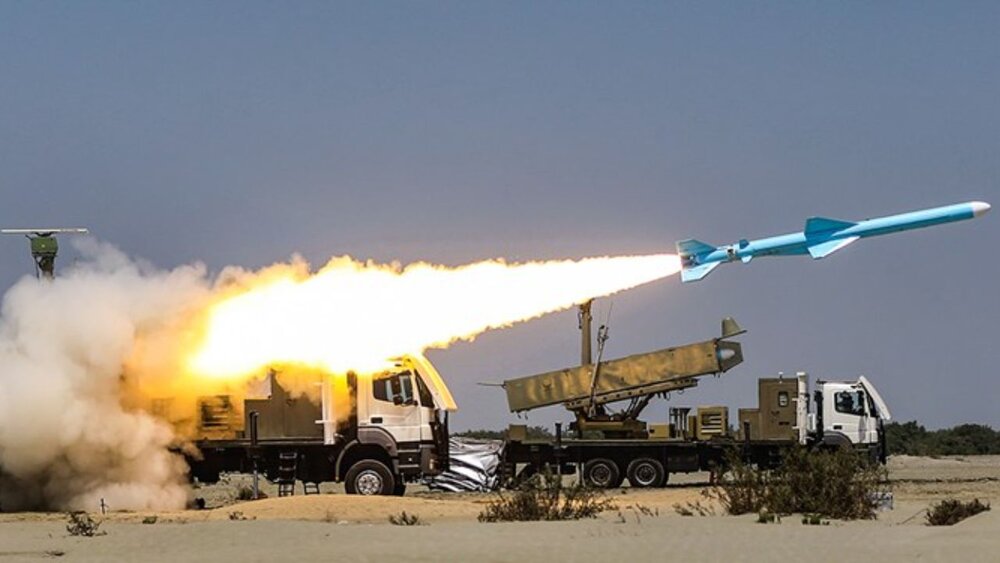Iran flexes military muscles as tensions simmer in region

TEHRAN – As Iran’s army holds large-scale military exercises in the country’s southern waters, a defense expert tells the Tehran Times that the exercises are meant to send many messages to countries in the region and beyond.
On Thursday, the Iranian army began a three-day military exercise in the Sea of Oman and parts of the Indian Ocean. The exercises, codenamed “Zolfaqar-99”, are taking place in areas spanning 2 million square kilometers.
Units from the Ground Force, Navy, Air Force, and Air Defense participated in the exercises, which is being held under the command of the Army’s Zolfaqar base.
New weapons and equipment such as cruise missiles and combat drones have been unveiled or tested during the war games. The new, domestically-manufactured Simorgh drone has hit targets in faraway waters using smart and precision-guided bombs for the first time during an exercise. Simorgh is a long-range operational drone, which can conduct various missions around the clock. Kaman-12 is another Iranian-made drone that was operationalized during the drills. The drone successfully conducted surveillance missions during the exercises. The army also fired surface-to-surface and coast-to-sea missiles.
Deputy Chief of the Army for Coordination Affairs Rear Admiral Habibollah Sayyari has said that the exercises were aimed to “boost preparedness and operational power of the Navy, Air Defense and Ground Force.”
In a clear warning to Iran’s enemies, the top general cautioned that any strategic mistake would lead to a strong response by Iran that won’t be limited to West Asia.
“Boosting preparedness and operational power of the Navy, Air Defense and Ground Force during the joint drills and countering any trans-regional threat through exercising operational plans and making sure of their capabilities in decisively countering any possible aggression are among the goals of the drills,” he added.
Military drills always have the main message: showing the preparedness of the armed forces and boosting deterrence, according to Mehdi Bakhtiari, a defense expert. The exercises also sent a message of preparedness and deterrence, said Bakhtiari, underlining the unveiling of the new weapons during the exercises.
The exercises were held against a backdrop of heightened tensions in the region. During the drills, the Army has warned the U.S. to stay out of the exercises’ battlefield. Rear Admiral Shahram Irani, the spokesman for the exercises, announced on Thursday that the forces have identified increased activities of American drones to gather information on the exercises area.
“These activities were detected by the army’s signal detection systems, and the drones were warned by the air defense,” the spokesman said.
Moreover, the region has witnessed an escalation of tensions over the UAE’s reckless decision to normalize relations with Israel, a move strongly denounced by Iran as a “betrayal” to the Palestinian cause. Iran also warned the UAE against giving Israel a foothold on its doorstep. The UAE-Israel normalization deal, which was brokered by the U.S., was widely seen as a prelude to protecting the UAE through establishing a coalition against Iran.
However, Bakhtiari said that Iran and the regional countries can join forces to maintain security without the help of countries outside the region.
“The army’s exercises have many messages to countries in the region and beyond. The message to the friends and neighboring countries is that Iran is an important and influential country and it is not a threat. Therefore, the security of the region should be maintained by the region’s countries,” Bakhtiari told the Tehran Times. “The message to countries outside the region is that Iran is a strong country and able to defend itself.”
The army’s exercises come at a time when the U.S. is seeking to restore all UN sanctions on Iran through a contested mechanism built into the 2015 nuclear deal to allow participants to the deal to snap back the international sanctions in case Iran didn’t uphold its obligations under the deal. On August 20, Mike Pompeo traveled to New York to notify the UN Security Council of Iran’s “significant non-performance” of the nuclear deal as defined in UN Security Council Resolution 2231. All JCPOA participants, along with 13 members of the 15-member UN Security Council, rejected the U.S. notification. They said that the U.S. had no legal authority to initiate the snapback process because it lost the right to do so by withdrawing from the JCPOA in May 2018.
Responding to a question on whether the Army’s exercises send political messages given the current simmering tensions between Iran and the U.S., Bakhtiari said that the drills are routinely held in Iran, but under certain circumstances, they could send political messages.
